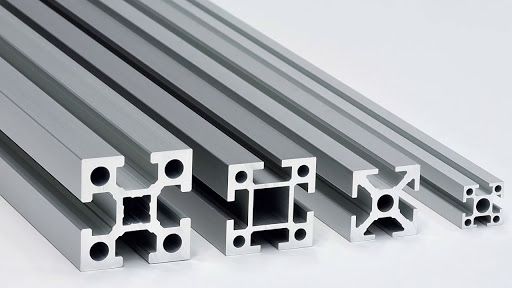Meta Description: Get answers to eight questions centered on the properties and manufacturing of aluminum that can help you conclude whether it is the right material for your project.
Aluminum 6063 is extensively used in many industries due to its unique properties compared to other materials and aluminum alloys and its ease of fabrication using sheet metal fabrication, CNC machining, etc.
Its extensive use does not mean it is the best material for your project. Therefore, we answered eight important questions about the architectural alloy so you can learn about its characteristics and determine whether it is the right material for your project.
Question 1: Is 6063 Aluminium Good?
Aluminum 6063 is a good material depending on several factors, including the type of project you want to embark on and the part manufacturing process you want to use.
6063 Aluminum alloy contains elements such as magnesium (0.45-0.9%), silicon (0.2-0.6%), copper, manganese, chromium, etc., each contributing several attributes. For example, magnesium enhances its strength, hardness, and corrosion resistance, while silicon forms magnesium-silicide phases, which helps during heat treatment. Silicon also ensures a smoother finish.
6063 alloy is available in standard extrusions, tubes, bars, and rods. It is an architectural alloy with a tensile strength of around 145-186 MPa (21,000-27,000 psi), depending on the heat treatment, yield strength of approximately 110 MPa (16,000 psi), and 8-12% elongation. However, it loses its strength at high temperatures.
Furthermore, it is compatible with manufacturing processes such as CNC machining, sheet metal fabrication such as bending and welding, and casting techniques. If all these align with your project, aluminum 6063 can be a good material.
Question 2: Does 6063 Aluminium Bend?
Yes, aluminum 6063 alloy bends. Its good formability, i.e., its ability to undergo plastic deformation without cracking, allows it to bend alongside other sheet metal forming operations. This ability is a significant advantage, especially in parts that require intricate shapes.
Bending the alloy depends on the temper. Bending is more successful in the T4 temper, with lower yield strength. However, yield strength in the T4 condition varies over time, and natural aging can lead to hardening and springback variation.
Another option is to bend in T6, which has no springback variation. However, it is more difficult to bend. You can also stop natural aging after being in T4 by treating the metal with heat to T6.
Common bending techniques for aluminum 6063 include roll bending, rotary draw bending, and stretch bending. Each bending technique has advantages and limitations and requires proper consideration of factors like bend radius, bend angle, and material thickness to prevent cracking, deformation, or springback.
Question 3: Does 6063 Aluminium Rust?
Aluminum 6063 has excellent corrosion resistance due to magnesium, which forms a protective layer on the metal. Furthermore, the alloy’s anti-oxidation ability can be maximized with proper surface treatments like anodization. Aluminum 6063 can be used in harsh environmental conditions for over 25 years.
Question 4: Can 6063 Aluminum Be Welded?
Aluminum 6063 is weldable using all common welding techniques, such as TIG, laser, and MIG welding. As a result, it is a go-to material in sheet metal fabrication projects that require strong and durable joints.
However, the choice of filler material plays an important role during welding. The recommended filler materials are alloy 5183 or alloy 4043. 4043 is suitable for maximum electrical conductivity, while 5346 provides strength and conductivity, although you might need to increase the weld size to compensate for lower conductivity.
Question 5: How Do You Harden 6063 Aluminium?
You can harden 6063 aluminum alloy using aging heat treatment and cold working. Each method enhances the alloy’s mechanical properties, including its strength and hardness, and can be done alone or combined.
Aging heat treatment, or precipitation hardening, involves heating the alloy to a specific temperature. At 177°C (350°F) for 8 hours, it produces T 6 and T 62 tempers, while at 183°C (360°F) it produces T5 temper.
Cold working involves deforming the alloy at room temperature to introduce defects in the crystal structure, which impede dislocation movement and increase strength and hardness.
Question 6: Can I Heat Treat 6063?
Aluminum 6063 alloy is heat-treatable to T4 temper at 522°C (970°F), followed by quenching in water and natural aging. You can also heat-treat and artificially age the alloy to T6 temperature.
Note: This applies to products that are not cold-worked after solution heat treatment or where the effect of cold work in flattening or straightening may not be recognized in mechanical properties.
Question 7: Can You Machine 6063 Aluminum?
Aluminum 6063 has average machinability and might require competent CNC machining services to get the most out of it. Furthermore, you can ensure quality by using appropriate tools. For example, carbide-tipped tools ensure tool longevity and better finishes, cutting fluids reduce heat buildup and improve surface finish, and optimizing feed rates and speed ensures quality.
Question 8: Can 6063 Aluminium Be Cast?
Yes, 6063 aluminum can be cast. The alloy has improved formability, extrudability, and high elongation (25%), which makes it suitable for casting parts with intricate and complex designs and excellent surface finishes.
Conclusion
Aluminum 6063 is an architectural alloy with properties that suit various applications. However, its extensive use does not mean it is the best material for your project. As a result, this article answered eight important questions about the alloy so you can learn about its characteristics and determine whether it is the right material for your project.

